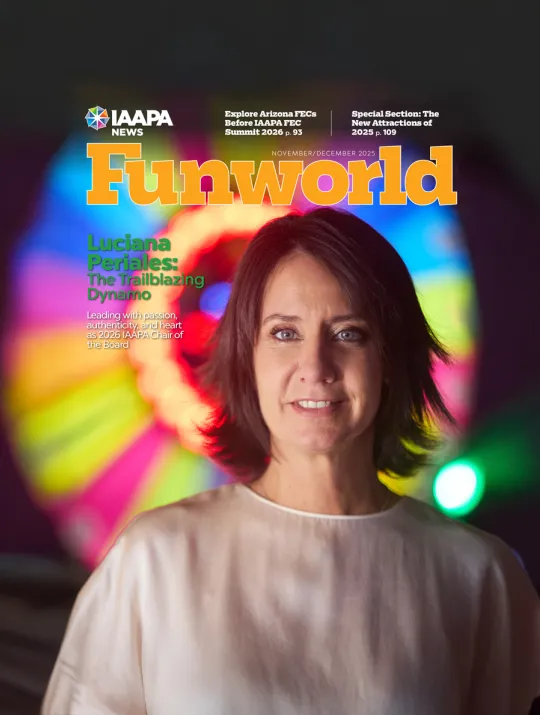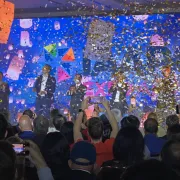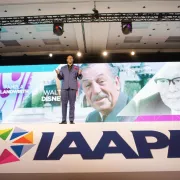How Brains Can Inform Design
Genein Letford, CEO of Caffe Strategies, urges attractions professionals to rethink the guest experience. She is on a mission to develop “Brain Capital”—the brain skills and brain health people need to work, create, and innovate together.
Business leaders must understand the importance of creativity to the brain, Letford believes. She describes the brain as “an experiential organ” that evolves continuously. Every ride, exhibit, and show shapes a guest’s experience. “So, what does it look like to create experiences with the brain in mind?” she asks. “What is the shape of a beautiful experience to you?”
Letford reminds audiences that we don’t see with our eyes, we see with our brain. “You and I can see the same artwork and have completely different experiences,” she says. Ensuring diverse voices are present at the decision-making table is key, she believes.
Understanding Visitors
Knowing and listening to visitors is essential, according to Ned Diestelkamp, vice president of PGAV Destinations. PGAV’s Voice of the Visitor study has introduced questions relating to visitors who are neurodivergent, have a disability, are people of color, identify as LGBTQ+, and have a larger body size to gain a deeper understanding of their motivations and experiences.
“Thirty percent of visitors reported visiting with someone who was neurodivergent or has a disability,” he explains. “In other words, 30% of our visitors are personally affected by the level of empathy attractions employ in accessibility choices.”
He highlights some troublesome results. “Voice of the Visitor shows that 34% of people with a disability experienced discrimination or had a negative experience due to that disability. Thirty percent of parties with a neurodivergent member reported a negative experience. And though LGBTQ+ and people of color parties reported significantly fewer negative experiences, with 9% and 8%, respectively, our industry knows that there is no excuse for any of those numbers to be above zero.”
Inclusive Innovations Across the Industry
Diestelkamp highlighted positive developments around inclusion, from the Hidden Disabilities Sunflower Lanyards scheme born at Gatwick Airport in England—which gives individuals a subtle way to signal that they may need extra time, understanding, or help in public spaces—to the sensory-friendly Calming Corner at the St. Louis Aquarium. The Sesame Place Philadelphia and Sesame Place San Diego parks have also partnered with the International Board of Credentialing and Continuing Education Standards (IBCCES) to become Certified Autism Centers.
Design That Benefits Everyone
IBCCES president Meredith Tekin spoke about the curb-cut effect. Although originally designed to improve accessibility for wheelchair users, curb cuts also benefit parents with strollers, travelers with luggage, delivery workers, and cyclists. Similarly, designing for people with sensory sensitivities can help those with anxiety or PTSD. By creating attractions that are easy to access and have amenities that encourage visitors to stay longer, everyone benefits.
“Information is accessibility,” Tekin says. Empower guests by providing pre-visit planning resources all in one place—not just ride policies, but social stories, menus, changing facilities, program schedules, and contacts if people have questions.
Regular employee training matters, too. “Statistically, your staff is neurodivergent as well,” she adds. Organizations could offer low-sensory spaces for both staff and guests.
Legoland’s Commitment to Inclusion
Compassion can transform experiences and have a lasting impact. Tekin recalls feedback from one family whose autistic child had a meltdown in a Legoland retail space. The staff simply said, “You don’t have to leave,” bringing tears to the parents’ eyes. “In a world where people are often met with misunderstanding or judgment, they offered acceptance and joy. This will be a lifelong visitor to Legoland,” Tekin says.
“Education is everything; it helps us to be better for our guests,” shares Julie Estrada, North America director of communications at Merlin Entertainments. All three Legoland Resorts in North America have worked with IBCCES to become Certified Autism Centers and more than 80% of staff have undergone training. “I love that we have sensory guides now throughout our parks,” Estrada adds. The parks also offer quiet spaces with weighted blankets, tactile toys, and noise-cancelling headphones.
What Comes Next
The Legoland parks’ journey toward accessibility and inclusion continues. The new Galacticoaster—set to open in 2026—will feature a wheelchair transfer-friendly design that marks a meaningful step forward. As Tekin puts it, operators should continually ask, “What can we do that’s going to roll out the welcome mat?”





 The Official Magazine of IAAPA
The Official Magazine of IAAPA







